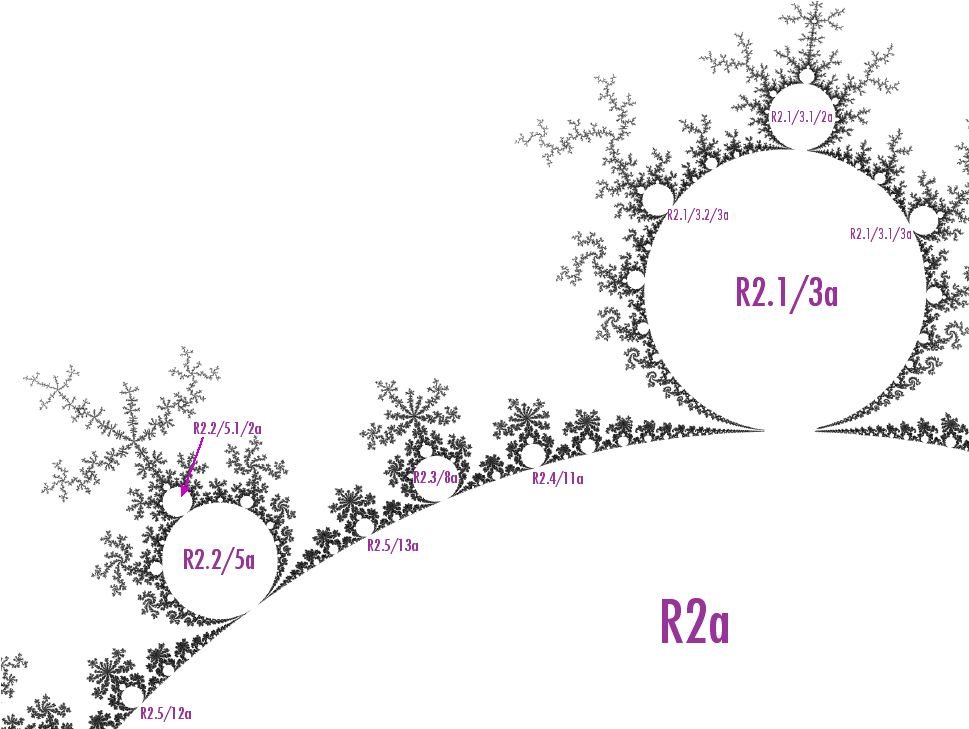Counterclockwise
Robert P. Munafo, 2012 Apr 16.
When discussing features around the boundary of a mu-atom (for example, the children of the mu-atom, the two directions one can go in while traveling on the boundary are called clockwise and counterclockwise. The same terms can apply to travel along a lemniscate, and to the order of external angles.
Counterclockwise is the direction in which the external angle and/or internal angle get bigger. Clockwise is the direction in which they get smaller.

some mu-atoms
Several of the mu-atoms in this figure are children of R2a. In counterclockwise order, they are: R2.1/3a, R2.4/11a, R2.3/8a, R2.5/13a, R2.2/5a, and R2.5/12a. Clockwise order is the other direction.
Similarly, three children of R2.1/3a are labeled; in counterclockwise order they are: R2.1/3.1/3a, R2.1/3.1/2a, and R2.1/3.2/3a.
Internal and external angles increase in the counterclockwise direction because that is the standard definition in trigonometry, calculus, etc. It is an arbitrary decision adopted as standard. It is interconnected with another aribtrary choice, putting the square root of minus one "above" the real axis (rather than "below") — one choice dictated the other. This is also related to the fact that as you proceed from positive real values to positive imaginary values, to negative real values, the imaginary component of the natural logarithm increases.
revisions: 20080314 oldest on record; 20120416 add illustration
From the Mandelbrot Set Glossary and Encyclopedia, by Robert Munafo, (c) 1987-2024.
Mu-ency main page — index — recent changes — DEMZ
This page was written in the "embarrassingly readable" markup language RHTF, and was last updated on 2012 Apr 16.
 s.27
s.27